The Magnet 101: Spanish Grotesque
Bosch's mysterious masterpiece and Spain's spin on the grotesque

Carla and I spent a few weeks in Madrid at the beginning of the year. It was the first time we'd visited since the mid-90s, when we spoke at a conference about Carla's book, Net Chick, and a book we co-edited, The Happy Mutant Handbook.
Even though it was chilly and rainy, the streets were packed with pedestrians. (I can't imagine how crowded it gets in the summer.) Madrid is a fantastic walkable city. Its distinct neighborhoods — Malasaña, Chueca, Salamanca, Sol, Las Letras — are all within 20 minutes or so of each other by foot. And unlike Lisbon, Madrid doesn’t have steep hills, so you won’t have to catch your breath as you explore.
Everywhere you go, there are restaurants and coffee shops. And it's not a big deal to eat dinner as late as 10 or 11 p.m. in Madrid. Most restaurants don’t even open for dinner until 8 PM. Here in the United States Carla and I usually finish dinner by 6:30. I prefer the European style. It works with my circadian cycle. I can’t do that here because I need to keep U.S. office hours.
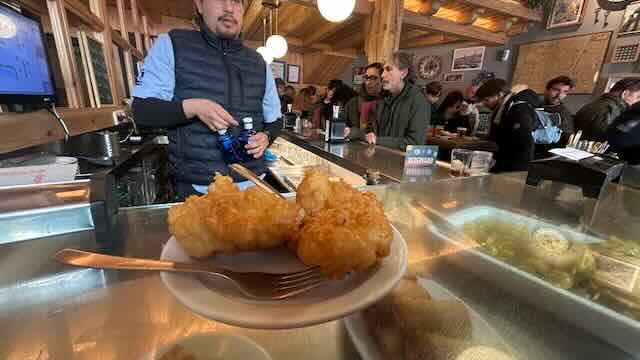
One Saturday around noon, Carla and I were aimlessly wandering around the Plaza Mayor area and we noticed a long line of people waiting to get into into a tiny tavern called Casa Revuelta. The line was moving pretty quickly, so we joined it to find out what everyone was waiting for. It turned out to be pieces of deep-fried battered cod (Bacalao rebozado). We ordered a of couple pieces and they were deliciously crispy on the outside and tender and fresh on the inside. Like everyone else, we ate while standing, and most customers were also having a glass of beer, wine, or vermouth.
Madrid has a lot of museums and art exhibitions. The famous Prado holds some of the world's greatest art, including Velázquez's finest works, and Hieronymus Bosch's Garden of Earthly Delights (circa 1500), which is my favorite painting. Seeing Bosch's 12-foot triptych in person blew our minds. Carla and I stood mesmerized for at least 20 minutes. The 500+ year-old painting is replete with “chicken fat,” as the old Mad comic book artists used to call their detail-loaded panels.
Why did Bosch paint Garden of Earthly Delights? No one knows. The current name of the painting was not given by Bosch himself. No one knows what he called it. While it was in the possession of an art collector named Henry III of Nassau between 1504–1538 it was called “a picture of the strange things of the world.”
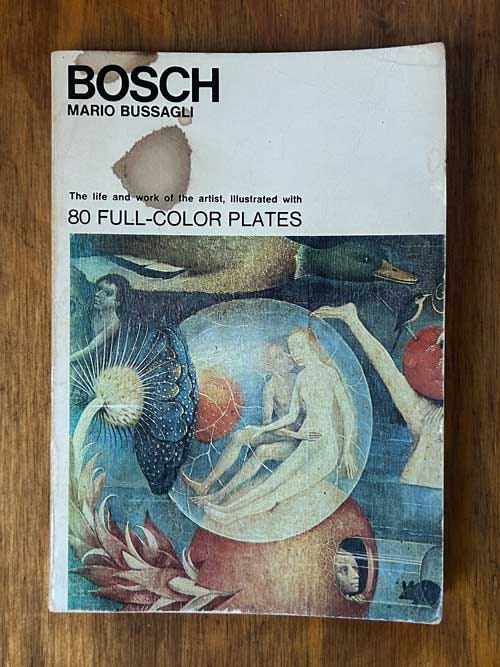
I have a small 1967 paperback book called Bosch by Mario Bussagli, which I consulted when I returned home. I learned that Hieronymus Bosch is a pseudonym. His real name is Jeroen Van Aken and he was born circa 1450. But beyond his approximate date of birth, name, and birthplace (a small town near Antwerp), his life remains a mystery. “Nothing is known of his personality or his thoughts on the meaning of his art,” says Wikipedia.
Bussagli asks, “Was he an anguished heretic who confessed his disbelief, by implication, in his art; or an ironically-minded believer, mockingly cynical about human nature; or a mystic of impregnable faith; or indeed all these things simultaneously?” If I had to pick, I’d say he was an ironically minded heretic who was having a fantastic time painting the bizarre scenes and the hundreds of people and monsters.
There's also the Reina Sofía Museum, which houses Guernica, Picasso's painting about the devastating bombing of the town in 1937 by Spain’s fascist general Franco and his pal Hitler. It’s 25 feet wide. I noticed that everyone who walked into the exhibition room was stunned into shocked silence, as if the painting had accosted them.
The Reina Sofía had a temporary exhibit on Esperpento, Spain’s unique version of the European Grotesque movement. It was influenced by Goya, and some of its hallmarks are humans transforming into animals, circuses and carnivals, bullfighting, and new ways of representing reality through various optical devices like thaumatropes, kaleidoscopes, zoetropes, and stereoscopes. Esperpento (which can mean hideous, absurd, illogical, or ridiculous in Spanish) had its heyday in the 1920s and 1930s, though its roots go back to the mid-19th century. Here are a few of the photos I took.
Scary times often result in great art.
In the next issue, I’ll share some more photos of our side trip to Toledo, Spain, and show you some of the weird little carvings in the cathedral.
Thank you for being a supporter of The Magnet. I appreciate it!



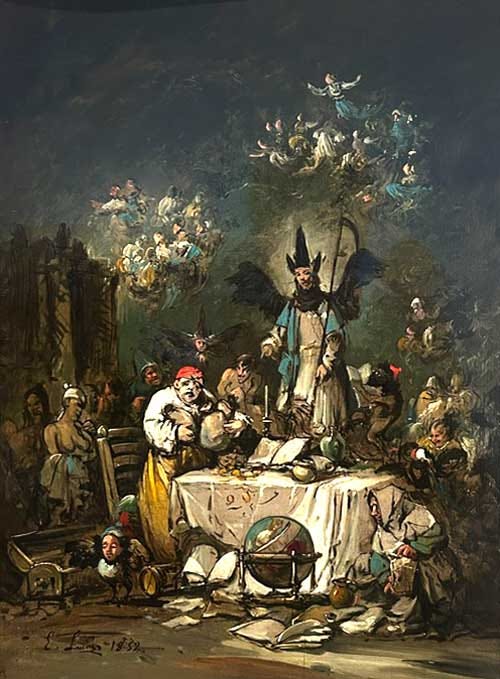
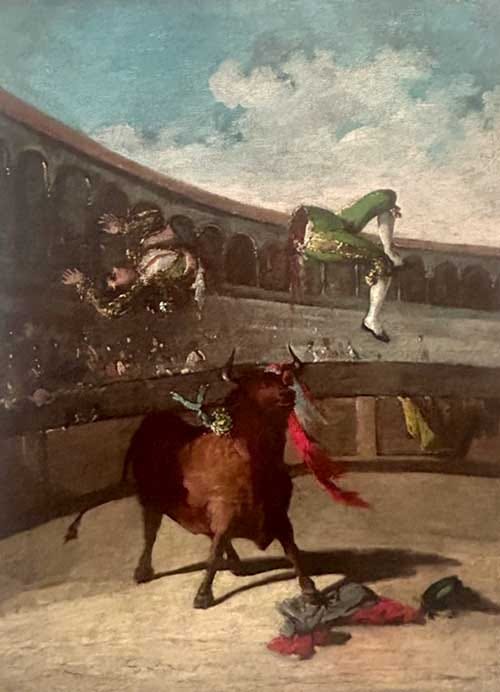

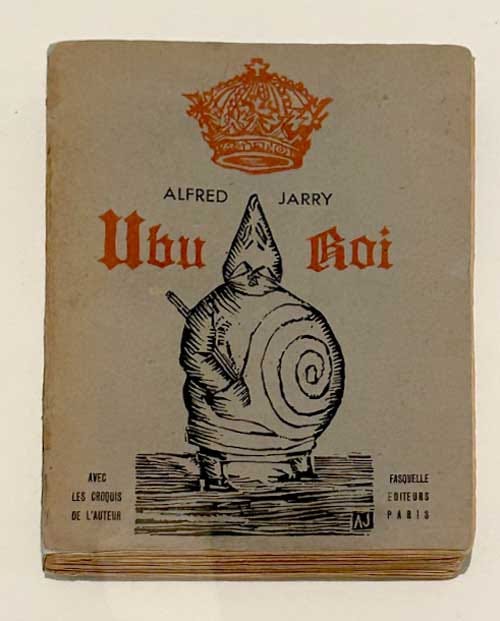
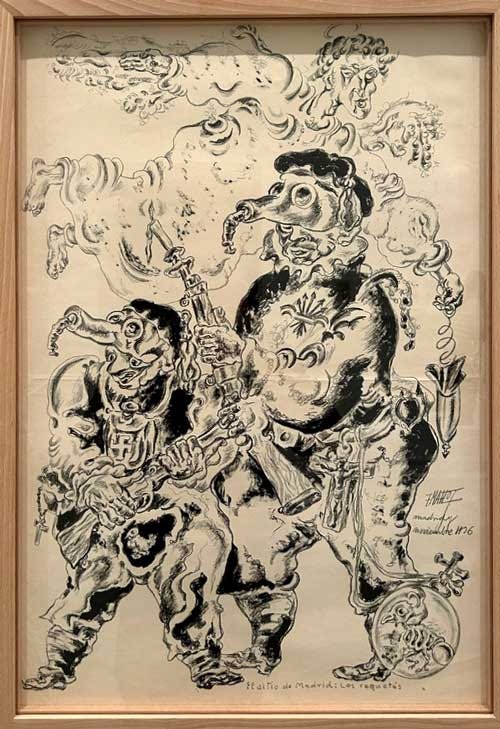

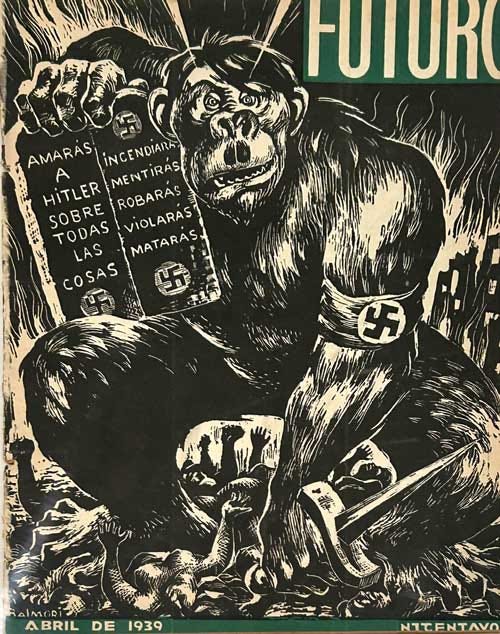
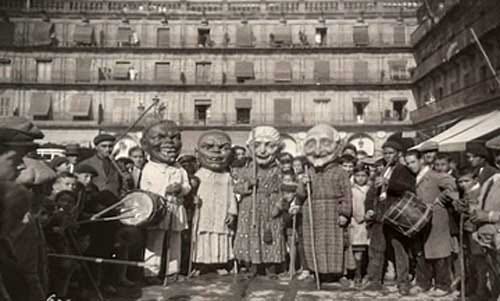


I like the idea of "chicken fat" in paintings and drawings. One of my favorite recent games is the strange frozen-in-time(but-kind-of-not) clue finding game Crime City by MicroMacro. You search a giant drawing to find clues about specific crimes. And can trace the clue events backwards through the drawing. So it's like multiple snapshots overlayed on a city. The details are crazy and there is so much to explore! You will love it, Mark.
https://www.micromacro-game.com/en/index.html
The first time I was exposed to Bosch was the album art for Dead Can Dance, Aion. I then found the painting in a book at the library. With the music and the book, that was a mind expanding weekend!
https://en.wikipedia.org/wiki/Aion_(Dead_Can_Dance_album)
Thanks for this, Mark. Nice reminder for when I was in Spain 5 years ago. Yes, so great to see that Bosch in person—literally stunning. Amazing to see the back and hinged covers. Imagine having it opened up for the first time, what a “reveal!”
If you’re in Lisbon go see Bosch’s three panel Temptation of St Anthony—similarly amazing. (And the Bosch figures in the gift shop are a trip.)
I also really enjoyed seeing the Alexander Calder mobile in a fountain—except not a fountain of water, it’s a fountain of liquid mercury!! That is in the Miro museum in Barcelona.